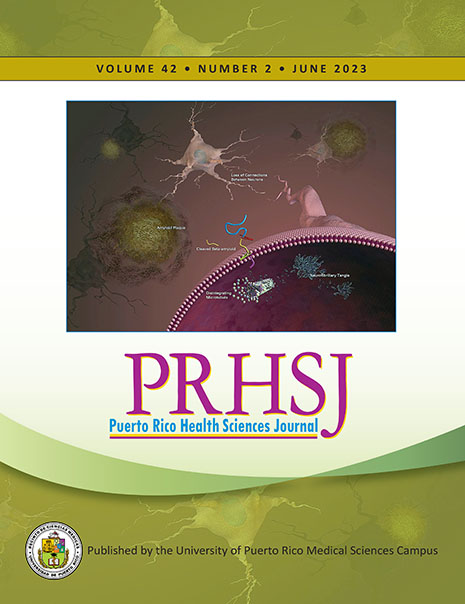Resumen
Objective: There is no consensus on the use of decompressive craniectomy (DC) to manage severe traumatic brain injury (sTBI). We evaluated the profile of pediatric patients admitted with sTBI and assessed functional outcomes, 6 months posttrauma, in patients who had a DC and in those who had not, and the functional outcomes of early versus late DCs. Patients and Methods: This case-control observational study evaluated pediatric patients admitted for sTBI in Puerto Rico (June 2016-October 2018); we included patients admitted within 24 hours of injury and had a Glasgow Coma Scale (GCS) of 8 or lower. 6-month post trauma outcomes were measured with the Glasgow Outcome Scale Extended Pediatric (GOS-E Peds). Results: 20 patients were included; 15 underwent a DC and 5 comprised the control group. We found no differences in terms of sex, age, GCS score, Pediatric Risk of Mortality score, or Pediatric Trauma Score. However, in the DC group, a higher percentage of patients presented significant cerebral herniation in the initial computed tomography scan (CT) (DC: 73%; control: 0%; P = .005). No differences were found regarding intracranial pressure (ICP), cerebral perfusion pressure, mean arterial pressure, PaCO2, or temperature. Patients in the DC group had longer hospital stay (DC: 41; control: 17 days; P = .0005). All patients with DC survived, with an early procedure being associated with favorable outcomes. Conclusion: As determined 6 months post-trauma, this study showed that early DC increased survival and improved functionality.
Authors who publish with this journal agree to the following terms:
a. Authors retain copyright and grant the journal right of first publication with the work simultaneously licensed under a Creative Commons Attribution License that allows others to share the work with an acknowledgement of the work's authorship and initial publication in this journal.
b. Authors are able to enter into separate, additional contractual arrangements for the non-exclusive distribution of the journal's published version of the work (e.g., post it to an institutional repository or publish it in a book), with an acknowledgement of its initial publication in this journal.
c. Authors are permitted and encouraged to post their work online (e.g., in institutional repositories or on their website) prior to and during the submission process, as it can lead to productive exchanges, as well as earlier and greater citation of published work (See The Effect of Open Access).
